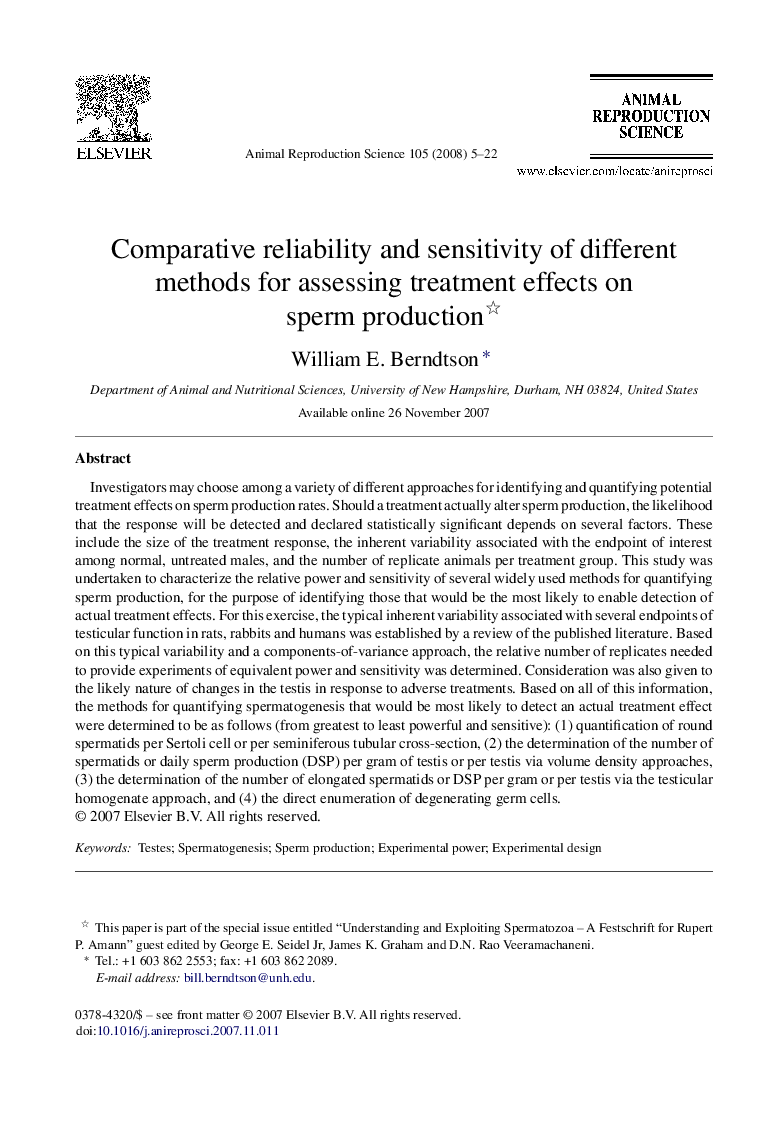| کد مقاله | کد نشریه | سال انتشار | مقاله انگلیسی | نسخه تمام متن |
|---|---|---|---|---|
| 2074556 | 1544807 | 2008 | 18 صفحه PDF | دانلود رایگان |

Investigators may choose among a variety of different approaches for identifying and quantifying potential treatment effects on sperm production rates. Should a treatment actually alter sperm production, the likelihood that the response will be detected and declared statistically significant depends on several factors. These include the size of the treatment response, the inherent variability associated with the endpoint of interest among normal, untreated males, and the number of replicate animals per treatment group. This study was undertaken to characterize the relative power and sensitivity of several widely used methods for quantifying sperm production, for the purpose of identifying those that would be the most likely to enable detection of actual treatment effects. For this exercise, the typical inherent variability associated with several endpoints of testicular function in rats, rabbits and humans was established by a review of the published literature. Based on this typical variability and a components-of-variance approach, the relative number of replicates needed to provide experiments of equivalent power and sensitivity was determined. Consideration was also given to the likely nature of changes in the testis in response to adverse treatments. Based on all of this information, the methods for quantifying spermatogenesis that would be most likely to detect an actual treatment effect were determined to be as follows (from greatest to least powerful and sensitive): (1) quantification of round spermatids per Sertoli cell or per seminiferous tubular cross-section, (2) the determination of the number of spermatids or daily sperm production (DSP) per gram of testis or per testis via volume density approaches, (3) the determination of the number of elongated spermatids or DSP per gram or per testis via the testicular homogenate approach, and (4) the direct enumeration of degenerating germ cells.
Journal: Animal Reproduction Science - Volume 105, Issues 1–2, April 2008, Pages 5–22